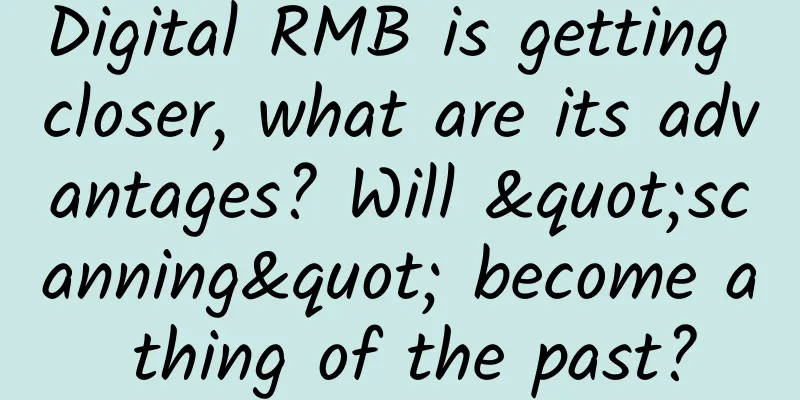Let’s celebrate the birthday of “π” together on March 14! How much do you know about pi?

|
Today is International Pi Day, and also International Mathematics Day. Throughout the ages, mathematicians have been tirelessly pursuing the precise value of pi. What is its charm? Compiled by New Media Editor Duan Dawei On November 26, 2019, the 40th General Conference of UNESCO officially announced that March 14th would be designated as the International Day of Mathematics. The reason for choosing this day is that the value of pi, which connects the "circle of heaven" and the "earth of earth", is approximately 3.14. Throughout the ages, mathematicians have been tirelessly pursuing the precise value of pi. How did mathematicians in history calculate pi? What is its charm? ⊙ ⊙ ⊙ The mathematical history of pi Everyone is familiar with pi. Many mathematicians in history have made unremitting efforts to calculate its exact value. As early as in ancient times, the great working people discovered that there was a hidden secret between the circumference and diameter of a circle. Unearthed cultural relics show that geometers in the ancient Babylonian period had calculated pi to 25/8 (that is, 3.125). The earliest recorded rigorous algorithm can be traced back to 250 BC. The ancient Greek mathematician Archimedes used the regular polygon method to obtain the lower and upper bounds of π as 223/71 and 22/7, that is, . ▲ Archimedes in Meditation (Image source: skd-online-collection.skd.museum) Archimedes' idea for finding pi is to first construct an inscribed polygon and a corresponding circumscribed polygon. When the number of sides is large enough, the perimeters of the two polygons approach the lower and upper bounds of the circumference of the circle. (Image source: Institute of Physics, Chinese Academy of Sciences) ▲ Zu Chongzhi (429-500), courtesy name Wenyuan, was a mathematician of the Liu Song Dynasty in the Northern and Southern Dynasties. Zu Chongzhi calculated two approximate values of pi: 22/7 ("rough rate") and 355/113 ("accurate rate"). The accurate rate calculated pi to the seventh decimal place, a record that was not broken until the 16th century by the Arab mathematician Al-Kashi. (Image source: Wikipedia) Since then, mathematicians have used methods such as the circle segmentation method and infinite series to calculate the value of π. Liu Hui, a mathematician in the Three Kingdoms period, created the circle segmentation method in about 265 AD, and used a regular 3072-gon to calculate the value of π to be 3.1416. Later, Zu Chongzhi used the circle segmentation method in 480 AD to calculate the length of the side of a regular 12288-gon, and obtained that pi is approximately equal to 355/113 (i.e. 3.1415929). ▲Leonhard Euler (1707-1783), a pioneer of modern mathematics and one of the greatest mathematicians of all time. French mathematician Laplace once commented on Euler's contribution: "Read Euler, he is everyone's teacher." (Image source: www.mathematik.de) In 1706, British astronomer John Machin was able to calculate π to the 100th decimal place using the formula generated by the Gregory-Leibniz series. In the same year, William Jones first used π as the exclusive symbol for pi in his New Introduction to Mathematics, but it was Leonhard Euler who really made mathematicians around the world accept this setting. In 1736, Euler began to use the symbol "π" in his book Mechanics, and mathematicians followed suit. It was not until the invention of calculus that mathematicians began to use infinite series to calculate pi, getting rid of the previous complicated calculations, making the calculation of pi easier and greatly improving the accuracy. In 1948, Ferguson of the UK and Wrench of the US calculated pi to 808 decimal places, which is the highest record of manually calculated pi values. After that, no one tried to break the record by manual calculation, because the age of computers had arrived. According to relevant media reports, in 2021, Swiss researchers used a supercomputer to calculate the famous mathematical constant pi to 62.8 trillion decimal places in 108 days, setting a record for the most accurate value of the constant to date. ⊙ ⊙ ⊙ Why do we need to continue calculating pi? In daily calculations, pi only needs to be rounded to a few decimal places. Even in engineering or physics calculations, the value only needs to be rounded to a few dozen decimal places at most. If the size of the observable universe is calculated with a 40-digit precision of pi, the error can be controlled within the diameter of a hydrogen atom. This means that a few hundred decimal places of pi are sufficient. Many mathematicians have tried to calculate a more accurate value of pi, but they have never succeeded. It was not until 1761 that German mathematician Lambert proved that pi was an irrational number, and people finally realized that it was impossible to calculate pi to the end. In 1882, when Lindemann proved that pi was a transcendental number, pi was no longer mysterious. Transcendental numbers are numbers that cannot be used as roots of polynomial equations with rational coefficients. The corresponding number is an algebraic number. Natural constants and pi are both transcendental numbers. Since the ultra-high precision of pi is meaningless and scientists know that pi is an infinite non-repeating decimal that can never be calculated, why are scientists still so persistent? Why do they continue to calculate it? Pi is a very important constant. Some people say that the secret of the universe is hidden in Pi. Scientists keep calculating in order to crack the secret of Pi. Discovering it will open the door to a new world. However, these artificial mysteries are not reliable and have no scientific basis at all. In fact, the reason why scientists keep breaking the record of the accuracy of pi is not for anything else, but mainly to verify the performance of supercomputers. Because in order to obtain a high-precision value of pi in a short time, the performance of the computer must be very powerful. The calculation of pi is more representative, so choosing it and breaking the record is also more likely to attract attention. ⊙ ⊙ ⊙ Pi is more than just a number In fact, in addition to boring numbers, pi has some other aspects that you may not expect. Visualization of π Designers Cristian Vasile and Martin Krzywinski transformed π into a stunning collection of artworks by connecting the first 10,000 digits of pi with corresponding colors to create gorgeous visualizations. π coin stamp When talking about pi, one naturally thinks of Zu Chongzhi, an ancient Chinese mathematician and astronomer. He made great contributions to China and the world, and was therefore selected by the World Records Association as the first scientist in the world to calculate the value of pi to the seventh decimal place. In 1986, the People's Bank of China issued gold and silver commemorative coins of outstanding Chinese historical figures (Group 3). One of the patterns on the back of the 22-gram silver coin was Zu Chongzhi. The Zu Chongzhi silver coin was designed and carved by Tong Youming. The coin surface is simple and plain. In addition to the delicate depiction of the main image of the character, the "compass car" on the background table (invented in the Yellow Emperor era, later lost, Zu Chongzhi followed the ancient method and remade it) and the geometric pattern of "Zu Rate" in the upper left corner further set off the character image, making it three-dimensional and full. In addition to the Zu Chongzhi commemorative coins, Shanghai Mint Co., Ltd. also minted a set of ancient scientific inventions - Zu Chongzhi commemorative medals. The front of the commemorative medal features Zu Chongzhi's head portrait and a diagram of how to calculate pi, etc. The back features numbers and the evolution of mathematical decimals, as well as a Chinese-style Ruyi silver abacus (inlaid on the commemorative medal with inlay technology). The commemorative medal uses the form of abacus beads and a combination of static and dynamic techniques of a circle with a hole to show the image and scientific achievements of Zu Chongzhi, a great scientist in my country. The innovative conception inspires respect for science and shows the exquisiteness of the medal. In addition to the coins and seals issued by my country, Niue issued a colored commemorative silver coin titled "π - The Secret of the Circle" in 2014. The coin has a diameter of 50 mm, weighs 50 grams, has a face value of 2 New Zealand dollars, and has a circulation of 500 pieces. The biggest feature of the coin is the application of nano-engraving technology, which contains more than 1 million digits of π in a square with a side length of 11 mm on the coin. The reverse of the silver coin depicts Archimedes calculating pi. Ancient Greece, as the ancient kingdom of geometry, made a particularly outstanding contribution to pi. Archimedes, a great mathematician in ancient Greece, pioneered the theoretical calculation of the approximate value of pi in human history and can be regarded as the originator of "computational mathematics". (Contents compiled from: Institute of Physics, Chinese Academy of Sciences, Science Academy, Science Exploration, Science Popularization China, Science, China Finance Magazine, etc.) Produced by: Science Central Kitchen Produced by: Beijing Science and Technology News | Beijing Science and Technology Media Welcome to share to your circle of friends Reproduction without authorization is prohibited |
Recommend
The invisible killer - Candida albicans
Candida albicans, also known as Candida albicans,...
Three-stage folding, this may be the folding screen phone that Xiaomi is about to release
[[254722]] Samsung demonstrated its foldable phon...
How to measure the distance from the moon to the earth? Maybe you need a "laser distance meter" ruler
In 1917, Einstein proposed the theory of laser ge...
It’s so hot in summer, why is it recommended to increase the refrigerator temperature?
Who is right? How should the refrigerator gear be...
Want to be in the same frame with the Chinese space station? Here is a super simple guide
[[434854]] On October 16, the Shenzhou 13 spacecr...
Analysis of the regularity of Douyin's popular cases: "Your Little Sweetie" is now worth 500,000
There are many cases of people becoming famous ov...
Tianshui Mini Program Customization Company, how much does it cost to customize a paper product mini program?
WeChat Mini Program is an application that users ...
What are the settings in Baidu bidding account settings?
How to enter the account settings Click to enter ...
Yang Guozheng's Eye Method + Sanyuan Naqi (3 sets 5.07G)
Yang Guozheng's Shape Parent Eye Method + San...
Why do mosquitoes taste the water before laying eggs?
Speaking of mosquitoes, most people have probably...
Why do some people become more and more addicted to teeth cleaning? It may not be the teeth's fault
This is the 4823rd article of Da Yi Xiao Hu Frien...
China Internet Report Released: Average Online Time Per Week: 27.9 Hours, Average Mobile Data Traffic Per Month: 7.2G
Now everyone is saying that "the traffic div...
How to easily operate content-based products? Just learn these 5 tricks
In the Internet product market, content-based prod...
If I give you 1 million for promotion, how would you spend it? 4 major platform optimization methods, which can be copied and executed!
The original intention of writing this article is ...
From brainstorming to implementation, how should we operate and promote events?
A senior who works in operations said that event ...









